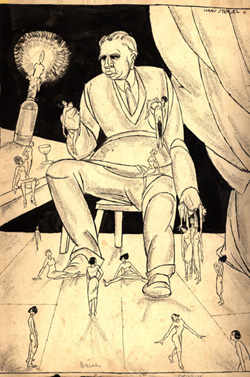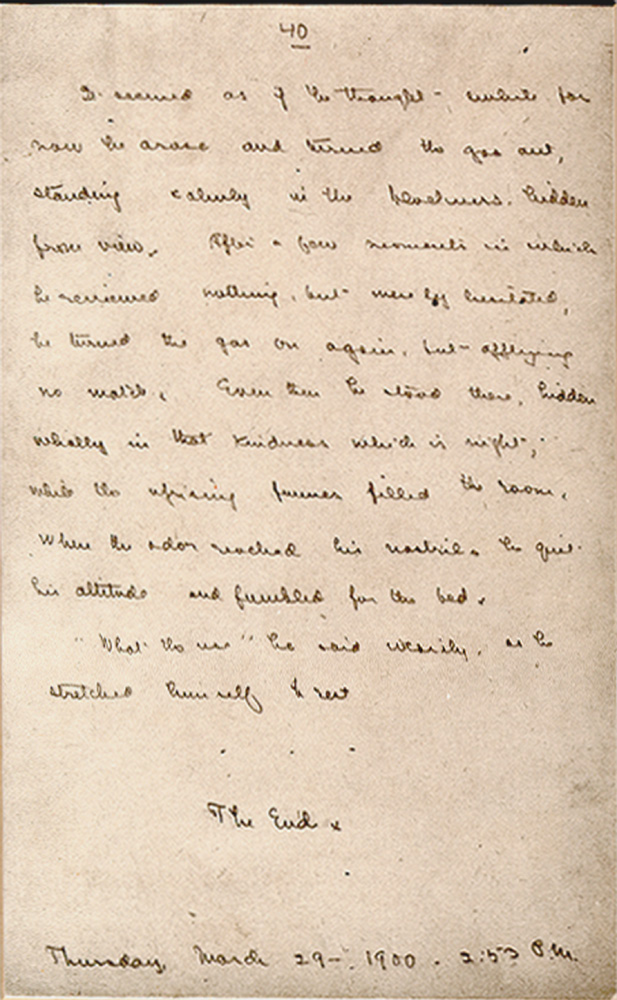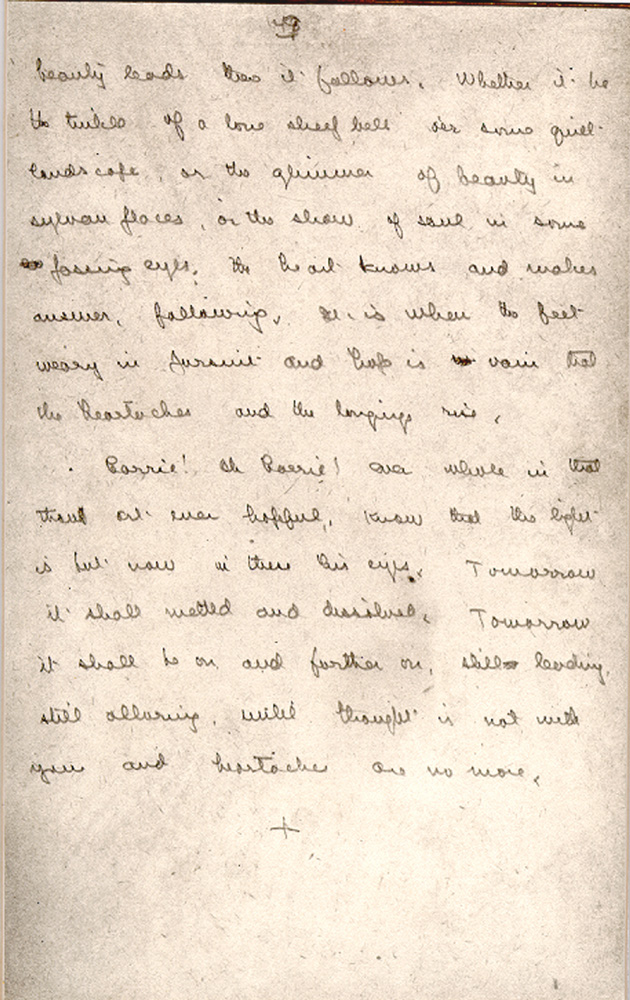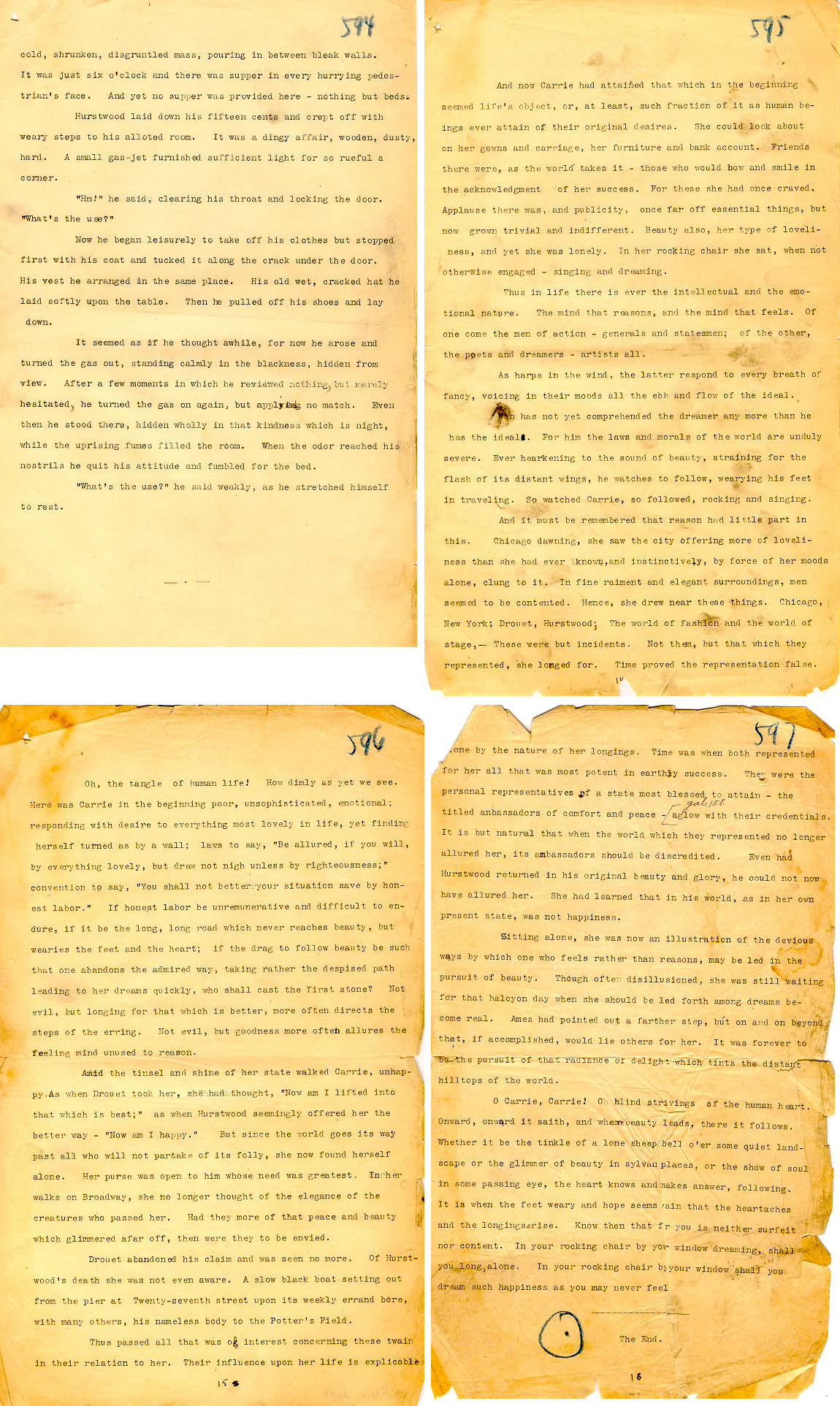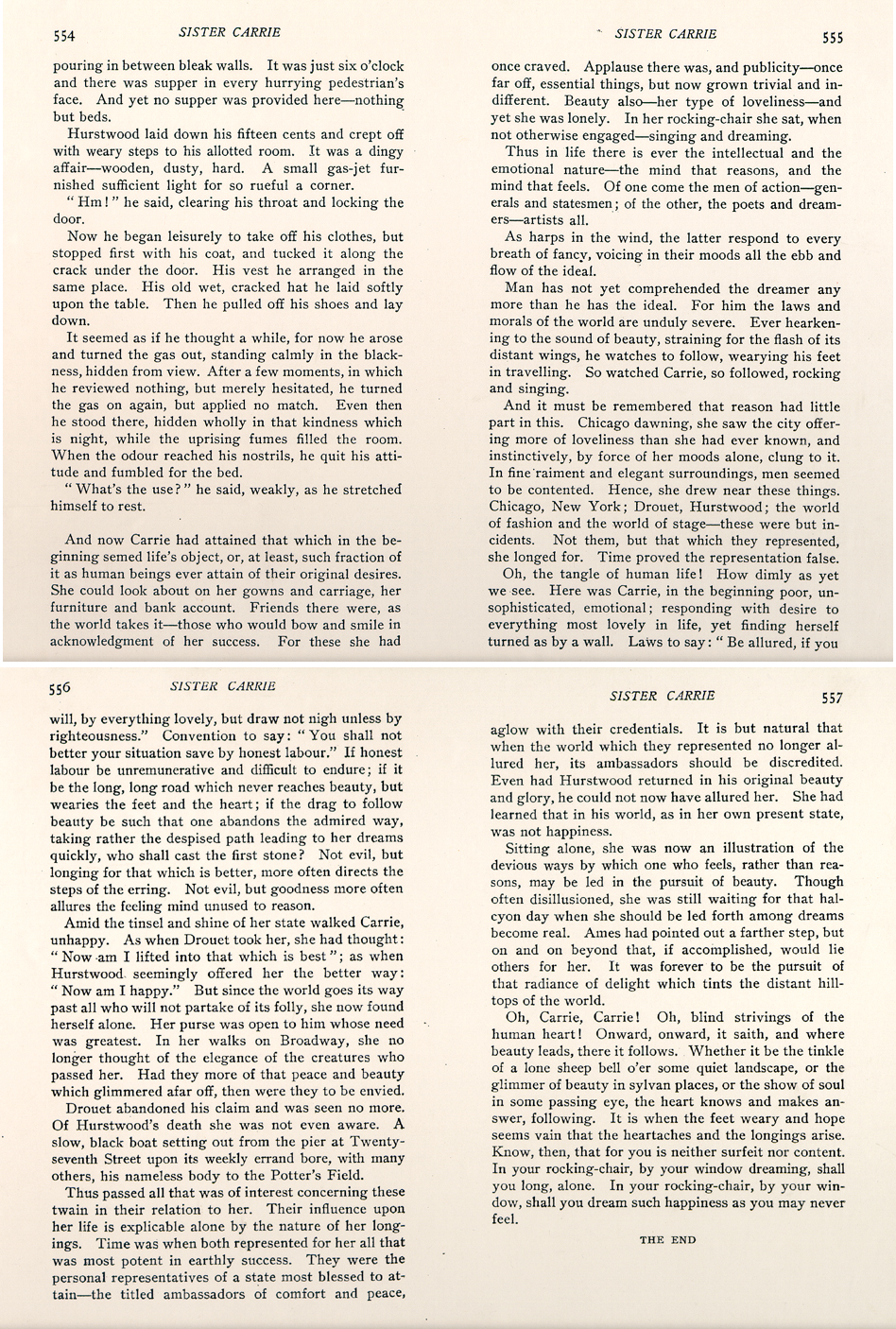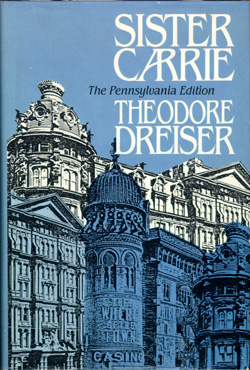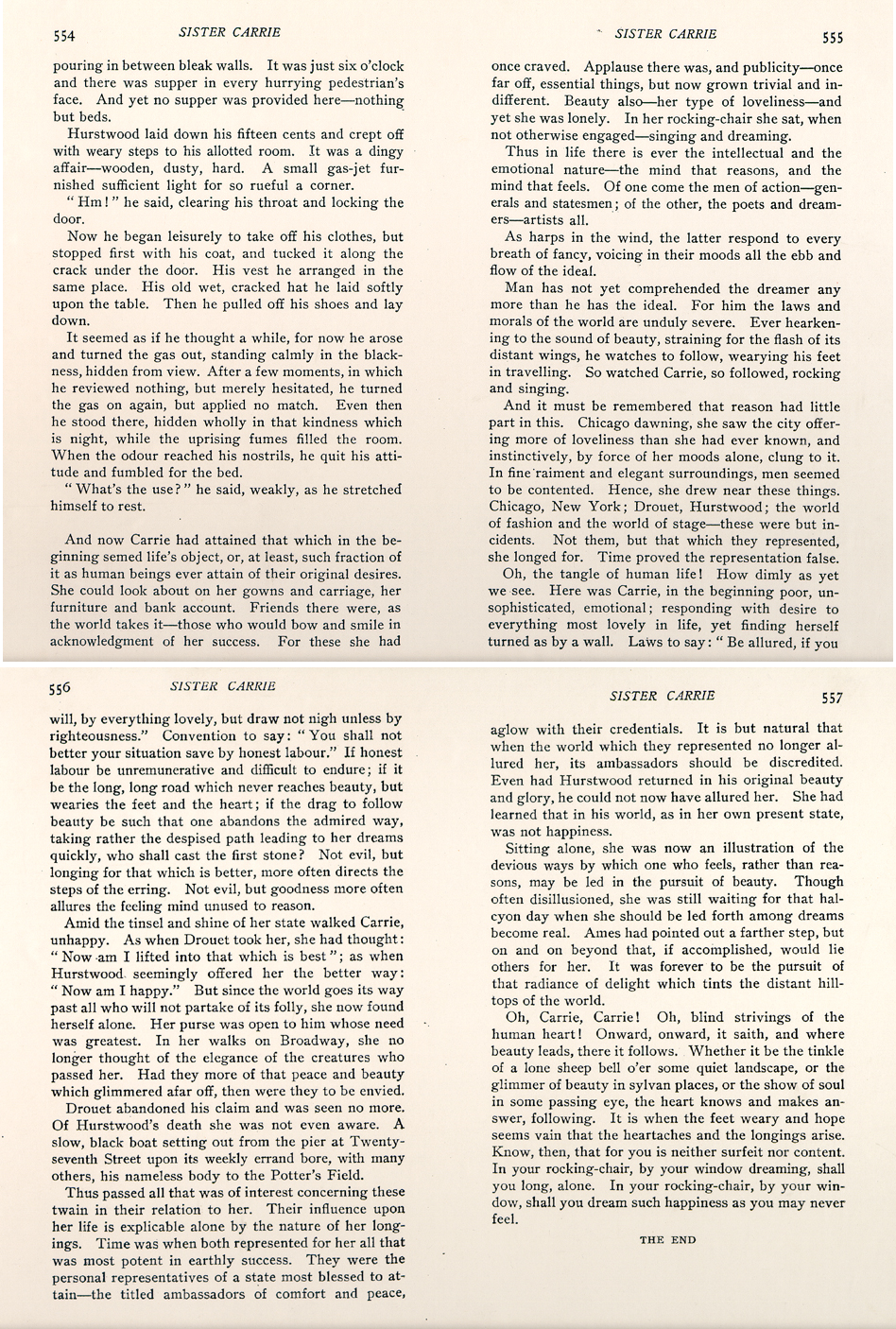The edit of Sister Carrie by Arthur Henry for the 1901 Heinemann edition condensed the first 200 pages down to eighty but kept the ending as published in the 1900 Doubleday edition. Until the 1981 Pennsylvania Edition, all published editions ofSister Carrie concluded with eleven paragraphs summarizing and editorializing about Carrie and her life--a Carrie who "had attained that which in the beginning semed [sic] life's object" but who is described by the narrator in the final paragraph as "neither surfeit nor content. In your rocking-chair, by your window dreaming, shall you long, alone."
The ending was revised by Dreiser sometime after he received the original typescript from Anna T. Mallon & Co. His manuscript clearly indicates that his first intention was to end the novel with Hurstwood's death and his final words, "What's the use?" But in revising the typescript, Dreiser rewrote the endings of Chapters XLIX and L, precluding any reading that would assume Ames and Carrie might marry and returning the plot to where it began--with Carrie.
But the last word--in 1900--went to Sara White Dreiser, for although Dreiser himself composed in manuscript a revised ending to Sister Carrie, his wife made a "fair copy" for the typist. In the process, she made significant changes in the text. Her version was transcribed by the typist, set by the typesetter, and published in the first edition of Sister Carrie.
Although Dreiser revised the ending for Sister Carrie sometime after receipt of the typescript, it was his wife Jug who revised his revision. The final paragraph in Dreiser's manuscript revision begins "Carrie! O, Carrie" but reveals subtle differences from the published, that is Jug's, ending. Dreiser writes: "In your rocking chair, by your window, dreaming, shall you long for beauty." Jug's alteration to "shall you long alone" chastens the image and questions the potential for Carrie to find a measure of happiness in the future. Jug's revision of the last line of the novel indicates that Carrie "may never feel" the happiness of which she dreams; Dreiser had originally written: "shall you still know such happiness as you may ever feel."
Fig. 1: Caricature of Theodore Dreiser, which begs the question: are the women Dreiser's characters or lovers?
